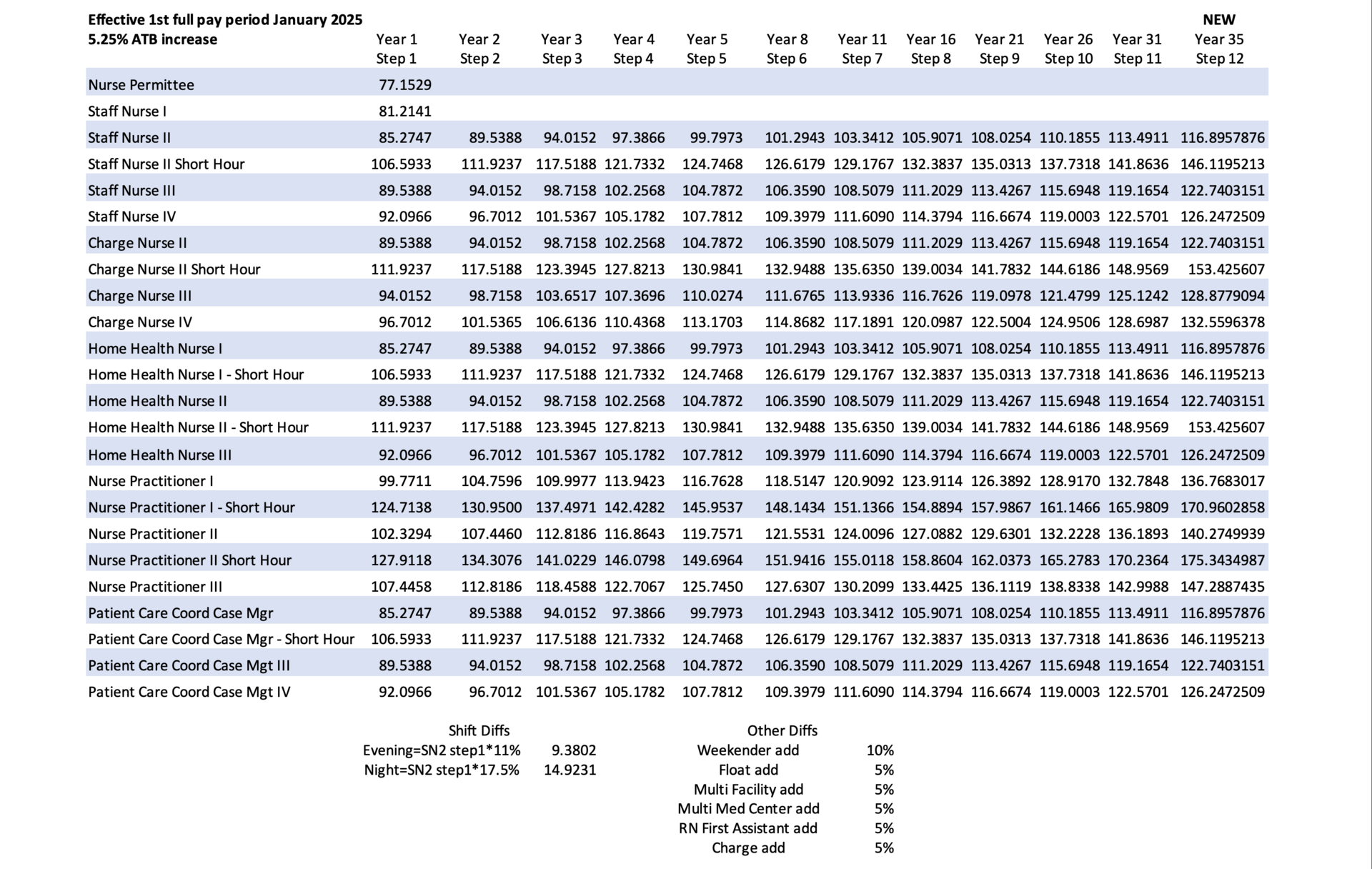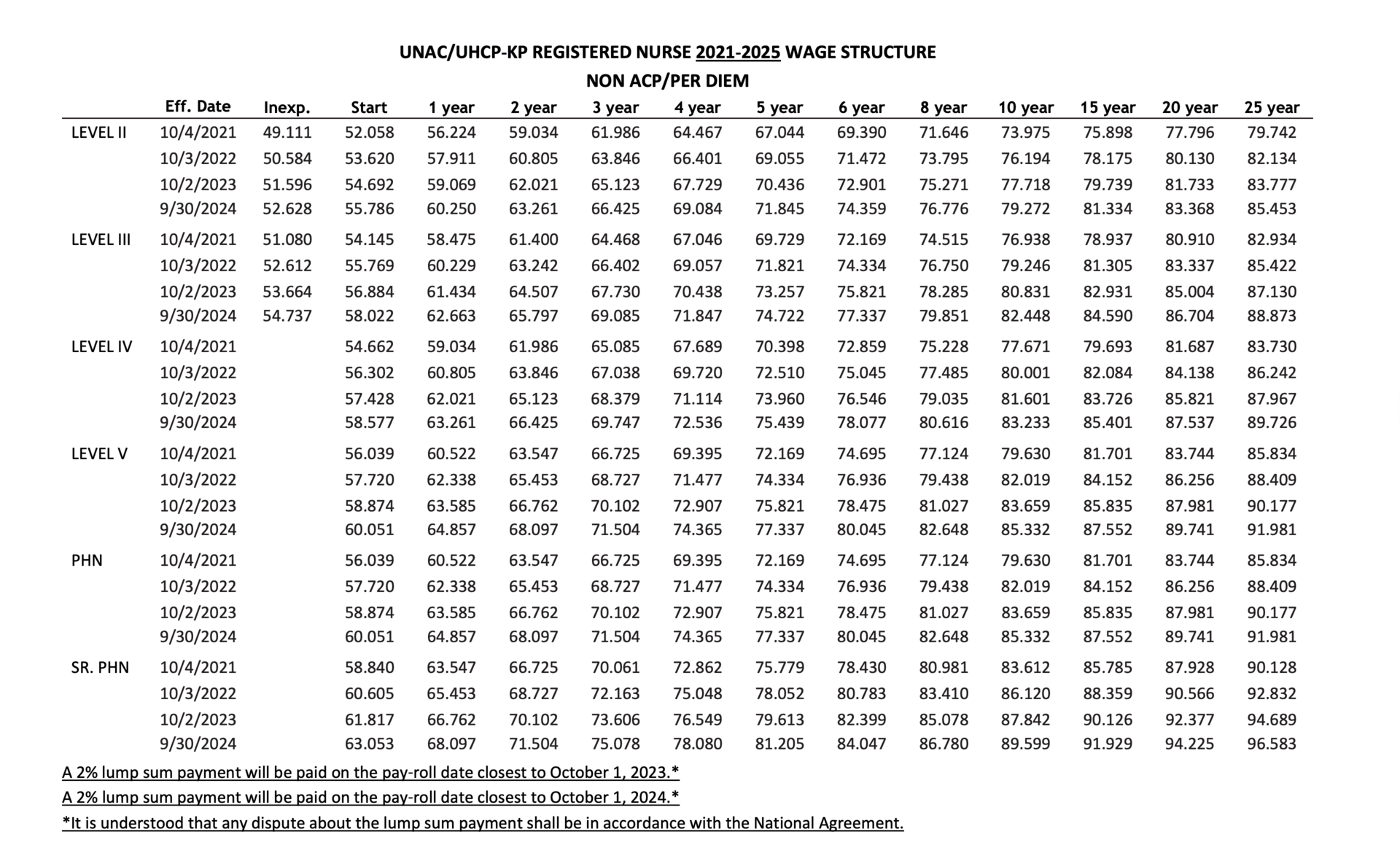- Nurses to Riches
- Posts
- $85 an Hour in NorCal, $53 in SoCal — The Kaiser Nurse Strike Explained
$85 an Hour in NorCal, $53 in SoCal — The Kaiser Nurse Strike Explained
The Kaiser nurse strike highlights how cost of living, short staffing, and union strength are shaping what it really means to work as a nurse in California.
Hi nurse,
Kaiser Permanente changed our lives.
If it weren’t for this job, Monica and I wouldn’t be debt-free, working 20 hours a week, or living a life where $300K a year feels… peaceful.
But here’s the truth no one tells you:
Not every nurse wearing the Kaiser badge is living this life.
Because depending on where you work in California, that same badge could mean a $50-an-hour difference—and a completely different quality of life.
North vs. South: Same Hospital System, Two Realities
In Northern California, Kaiser nurses represented by the California Nurses Association (CNA) start at around $85/hour. Night shifts climb to a little over $100/hour for new grads.

In Southern California, nurses doing the same job start near $53/hour.

That’s a $32-an-hour gap—or about $66,000 a year for a full-time nurse working 40 hours a week.
Two nurses, same company, same scrubs, same patients… but radically different paychecks.
And it’s not just nurses. Pharmacists, physical therapists, and physician assistants represented by the United Nurses Associations of California/Union of Health Care Professionals (UNAC/UHCP) are fighting the same fight—understaffed, underpaid, and overworked.
Why Southern California Nurses Are Striking
As of mid-October 2025, about 31,000 Kaiser workers in California and Hawaii have walked off the job.
They’re not just fighting for a raise. They’re fighting for safe staffing and basic respect.
The strike runs five days—from Tuesday to Sunday—but the message behind it is years in the making.
Union president Charmaine Morales, a longtime Kaiser nurse, said it best:
“This isn’t about the money. This is about respect. This is about dignity. This is about ensuring quality patient care.”
Morales said nurses are making a sacrifice—they don’t get paid while striking—but they’re doing it because patient care has already been compromised.
Another nurse anesthetist in Redwood City said his team lost 25% of their staff in two years. They’re now running short, with longer wait times and heavier workloads. He said,
“Kaiser has taken advantage of our compassion.”
That’s the heart of it. The people who’ve kept this company standing since COVID are now burning out because executives are pocketing millions while asking frontline staff to do more with less.
Follow the Money
Kaiser isn’t broke. Far from it.
2023 profit: $4.1 billion
2024 profit: nearly $13 billion
Operating revenue (2024): $115.8 billion
CEO salary: $15.6 million
Investments: over $100 billion, including stakes in fossil fuels, prisons, alcohol, casinos, and weapons manufacturers
So when Kaiser tells the public that giving nurses a 25% raise instead of 21.5% would “cost too much,” what they’re really saying is they’d rather protect their investment returns than the nurses keeping the lights on.
That 3.5% difference equals about $300 million a year spread across 60,000 employees.
But in context of $17 billion in profits over two years, that’s pocket change.
Inflation, Ratios, and Reality
Over the last four years, inflation has climbed 15.7%.
Kaiser’s offer of 21.5% over four years sounds fair—until you realize SoCal nurses are still starting over $30/hour lower than their NorCal peers.
And unlike NorCal nurses, who benefit from CNA’s hard-won ratios—like 1:4 in the ER, 1:3 in step-down, 1:1 for criticals—Southern California nurses are stretched thinner.
Many handle six or more patients at once.
That’s not “staffing flexibility.”
That’s danger—for patients and for nurses.
What’s Really at Stake
This strike is part of a bigger post-pandemic reckoning.
Across the country, nurses are dealing with:
Chronic understaffing
Administrative overload
Pay that hasn’t kept up with inflation
Executives collecting record bonuses
Healthcare workers are tired of being told to “do it for the patients” while their employers invest billions in everything but patient care.
As one labor economist put it, short strikes like this don’t cripple the system financially—but they’re a signal.
A signal that healthcare workers are done carrying it on their backs for free.
The Real Divide
I’ll be honest—I love where I work. Kaiser NorCal has given me more freedom and financial stability than I ever imagined.
But I also know this: I’m standing on ground paved by union power.
Without the CNA, my ratios wouldn’t exist.
Without those contracts, my pay wouldn’t break $100/hour.
And without the nurses fighting right now in Southern California, there’s no one left to hold the line for the rest of us.
This fight isn’t NorCal vs. SoCal.
It’s workers vs. a system that keeps pretending we’re replaceable.
The Takeaway
If you’re a nurse wondering what to do next—don’t just chase the hourly rate.
Look at the union, the ratios, and the cost of living in that city.
That’s why I built Map My Pay—so you can see how far your paycheck actually goes.
Because you can’t outwork a broken system.
But you can outsmart it.
Do you want to make more as a nurse?
I built the Nurses to Riches Accelerator to help you:
Relocate to Northern California the smart way
Secure a high-paying hospital job (we’re talking $200K+ a year)
Learn to calculate your real take-home pay
Work fewer hours—without sacrificing income
Start investing + paying off debt like a boss
I’ll even show you how to compare hospitals, filter by pay and shift type, and fast-track your move so you’re not spinning your wheels for another year.
Use code LOYALTY10 for 10% off the program
Weekly Update:
Watch our latest YouTube videos:
Download our app — Map My Pay so you can compare nurse salaries and cost of living data across over 1000 US cities.
Reply